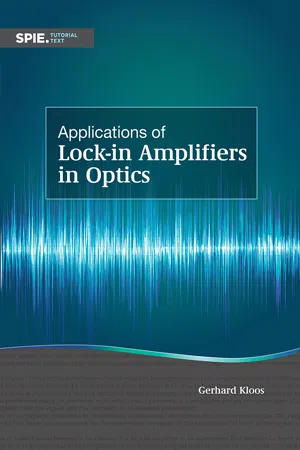
- English
- PDF
- Available on iOS & Android
About this book
Lock-in amplifiers are key devices in numerous instruments used in the optical sciences or in optical equipment in industry. In many experimental configurations, they represent the means to reliably detect and record small or weak signals. The purpose of this text is to provide a step-by-step introduction to this technique. The first part explains how modulation is used to extract a signal from noise and describes different types of modulation. The focus shifts from electronics to optics in the second part, which covers lock-in amplifier applications in optical instruments. The book is intended for readers who want to better understand instruments and experiments based on lock-in detection and/or to design (and perform) new experiments in which lock-in amplifiers are applied.
Frequently asked questions
- Essential is ideal for learners and professionals who enjoy exploring a wide range of subjects. Access the Essential Library with 800,000+ trusted titles and best-sellers across business, personal growth, and the humanities. Includes unlimited reading time and Standard Read Aloud voice.
- Complete: Perfect for advanced learners and researchers needing full, unrestricted access. Unlock 1.4M+ books across hundreds of subjects, including academic and specialized titles. The Complete Plan also includes advanced features like Premium Read Aloud and Research Assistant.
Please note we cannot support devices running on iOS 13 and Android 7 or earlier. Learn more about using the app.
Information
Table of contents
- SPIE Terms of Use
- Copyright
- Introduction to the Series
- Contents
- Preface
- 1 Introduction
- 2 Basic Concepts
- 3 Optical Spectroscopy
- 4 Optical Interferometry
- 5 Crystal Research and Technology
- 6 Infrared Thermography
- 7 Laser Wavelength Stabilization
- 8 Advanced Microscopy
- 9 Other Applications
- Index
- About the Author